Genre: Action Developer: Jaleco Publisher: Jaleco Players: 1 Released: 2000
Carrier’s release on the Sega Dreamcast marked an important moment in survival-horror gaming history. Jaleco introduced this game into a crowded market influenced by Resident Evil, yet it still managed to offer a unique, if unoriginal, experience. I played through the game when it originally appeared, and reviewing now around Halloween gives me a chance to re-examine its gameplay mechanics, story, and reception. The experience has once more laid bare both its strengths and weaknesses compared to its peers, but it has also reaffirmed my belief that Carrier remains a game worth playing, one even worthy of a sequel.
Of course, I have to get the similarity to Resident Evil out of the way first, a common need when reviewing survival horror titles from this era. Carrier Debuted only four years after the first title in Capcom’s classic franchise and built itself on that game’s tried-and-true formula, using lots of familiar gameplay elements. For instance, players navigated the cramped spaces of its setting, the aircraft carrier Heimdal, using tank controls and fixed camera angles while they searched for keys and items to advance the story. Carrier wasn’t always successful in this regard and sometimes struggled to overcome the well-known limitations of that design. A good example of this is that the fixed camera angles often blocked players’ views of enemies, leading to unexpected deaths and frustration. This issue sometimes diluted the atmosphere that has always been the bread and butter of survival horror games, the tension that comes from fearing unseen threats.
Generally, I think the story does do a good job of mitigating those limitations. Set against a backdrop of science fiction horror like James Cameron’s Aliens, Carrier featured an ancient creature named ARK that was released by a terrorist organization to conquer the planet. The organism wreaked havoc on the Heimdal, infecting people in its mission to destroy humanity. Players controlled Jack Ingless, who had to navigate the chaos and survive long enough to stop the end of the world. The plot, while interesting, obviously borrowed more than a bit from John Carpenter’s The Thing by making many of the infected people appear normal to the naked eye. The only way to know if someone was infected was to scan them with the BEM-T3 scope, a device that can also be used to find items and ammunition. Unfortunately, Carrier never explored this aspect of the plot too deeply. Although the story unfolded gradually and contained some cool moments of suspense, overall, it ultimately followed conventional paths a bit too often and missed some genuine opportunities to surprise players.
Additionally, the combat system, while functional, lacked depth compared to better-developed titles like Silent Hill or Dino Crisis, both of which appeared the previous year. A big issue for me was Carrier’s limited weapons and uninspired enemy designs. Take the BEM-T3 Scope. I felt that it added an intriguing twist to gameplay by letting players detect threats and enhance visibility in darkness. However, since it switched to a first-person view whenever used, it disrupted the action’s flow and immersion. In an effective survival horror game, all mechanics should strengthen the players’ connection to the environment and story, and issues like this were some of the ways in which Carrier came up short in building on all the other games that came before it. It’s a big step up from Blue Stinger, to be sure, but I felt that there was so much more that could have been done with the scope idea to increase the atmosphere (enhanced ambient sounds while in first-person mode, perhaps?), as well as with the Dreamcast hardware in terms of atmosphere, like lighting and other effects.
The characterization and dialogue in Carrier also warrant some criticism. While the voice acting was competent, it could be distractingly poor at times (like in just about every other survival horror title ever made), once more affecting the immersion. Ideally, good voice acting can help strengthen emotional connections during key narrative scenes, but here it often came off as disjointed, which weakened the story’s sense of urgency and desperation. Jaleco’s ambition for the narrative was commendable, but its execution faltered somewhat. To be fair, the voicework isn’t much worse than any Resident Evil game, and it’s leagues better than Deep Fear on the Saturn. I guess I was hoping that we’d see things take a step forward on Sega’s new machine, especially more than a year after it launched.
Graphically, Carrier showcased the Dreamcast’s capabilities with detailed environments and characters, creating some really nice settings. Unfortunately, Jaleco was the victim of bad timing. Even though Carrier outshined many games of its time, it quickly overshadowed by Resident Evil CODE: Veronica, which was released just a couple of months later. That title would finally bring survival horror into the next generation, and Carrier, while looking nice, was instantly dated once Capcom unleashed its next entry. Carrier’s mix of pre-rendered graphics and real-time 3D sometimes created impressive visuals, but this inconsistency highlighted the overall lack of polish in Carrier’s presentation. Technical issues, like frame slowdowns in larger areas, were also notable in some instances. There’s that gosh-darned tension again. Carrier just wouldn’t leave it alone!
I know it seems like I’m beating down on Carrier, but the good does outweigh the bad. The graphical issues don’t subtract from the fact that Jaleco did indeed try to do something different. I have to give the company props for the game’s setting, a huge aircraft carrier adrift in the ocean. A horror game on a ship was a really cool idea, and the claustrophobic, labyrinthine locations were a welcome change from haunted mansions and scientific complexes. Moreover, even if the static camera angles hurt one’s ability to appreciate them fully, Carrier’s fully-3D environments were a notable advancement from the pre-rendered backgrounds we were all used to.
Again, I don’t want to sound like I hated Carrier. I didn’t. I enjoyed it a lot back in 2000, and I had fun with it again now. The problem is that one can’t help but compare it to its more successful counterparts, particularly the Capcom titles. After all, it was more than a little inspired by them. This similarity typically earned Carrier the label of a “poor man’s Resident Evil by many people.” Those kinds of comparisons, despite being somewhat unfair, are mostly based on Carrier’s dependence on established genre norms and tend to neglect the game’s attempts at innovation.
One of the best aspects of Carrier was that it let players tackle the horror with two different characters. Along with Jack, there was another protagonist named Jessifer Manning, whose storyline and perspective as slightly different. Much like Leon Kennedy and Claire Redfield’s dual adventures in Resident Evil 2, Carrier’s two characters added replay value to the game. Yeah, I know this feature was another instance of Jaleco shamelessly copying Capcom, but I can’t fault them here. If you’re going to steal ideas, these are the kind you should take!
Compared to Blue Stinger, Carrier showed greater overall production quality and coherence in gameplay. To me, this makes Carrier a valid alternative for survival horror fans and new Dreamcast owners who are looking for something beyond mainstream choices (which are available on the machine as well). Although its limitations prevented it from achieving complete success, I think Carrier still offers enough engaging content and thematic depth to merit consideration for gamers looking for their next jump scare.
Ultimately, Carrier occupies a complicated spot within the survival horror genre. While it leans heavily on Resident Evil for its experience, it also includes elements that enhance playability. Its lack of originality and design flaws may have prevented it from matching the excellence of its influences, but for genre enthusiasts eager to explore well-trodden ground, Carrier presented an intriguing, albeit flawed, journey through familiar territory. Its shortcomings are evident, but the experience has its merits, and for some, Carrier might still be a hidden gem worth discovering, especially if found for a reasonable price.
SCORE: 7 out of 10

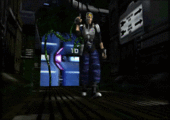
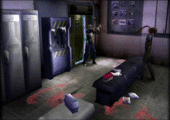
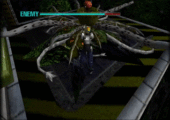
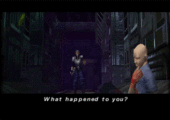
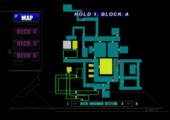
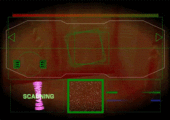
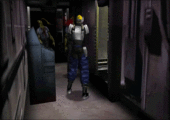
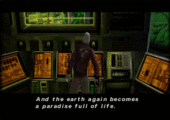
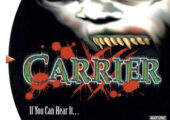
Recent Comments